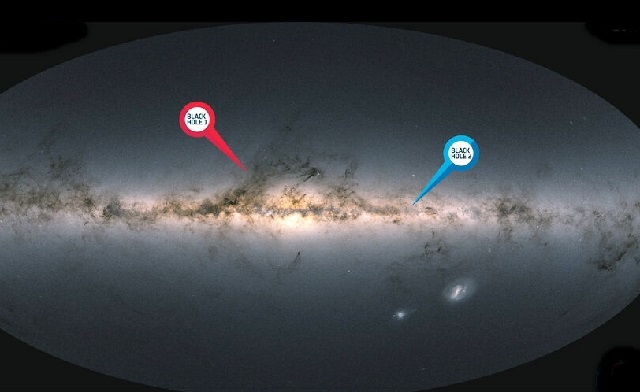Paris: A team of astronomers used the European Space Agency’s (ESA) Gaia spacecraft to discover two new black holes that are closer to Earth than any other black hole known yet.
The black holes, Gaia BH1 and Gaia BH2, are respectively located just 1,560 light-years away from us in the direction of the constellation Ophiuchus and 3,800 light-years away in the constellation Centaurus. In galactic terms, these black holes reside in our cosmic backyard, the ESA said in a statement.
The two black holes were discovered by studying the movement of their companion stars. A strange ‘wobble’ in the movement of the stars in the sky indicated that they are orbiting a very massive object.
Gaia accurately measures the positions and motions of billions of stars. The movement of stars against the sky can give essential clues about objects that gravitationally influence these stars. These objects can include other stars, exoplanets, and also black holes.
“The accuracy of Gaia’s data was essential for this discovery. The black holes were found by spotting the tiny wobble of its companion star while orbiting around it. No other instrument is capable of such measurements,” said Timo Prusti, ESA’s Gaia project scientist, in the statement.
In both cases, the objects are approximately 10 times more massive than the Sun. Other explanations for these massive companions, like double-star systems, were ruled out since they do not seem to emit any light.
Until recently, all the black holes astronomers knew of were discovered by emission of light – usually at X-ray and radio wavelengths – produced by material falling in.
The new black holes are truly black and can only be detected by their gravitational effects. The distance of the stars to the black hole, and the orbits of the stars around them, are much longer than for other known binary systems of black holes and stars.
Those closer star-black hole pairs, called X-ray binaries, tend to be very bright in X-ray and radio light, and thus easier to find. But the new discoveries suggest that black holes in wider binaries are more common.
“What sets this new group of black holes apart from the ones we already knew about is their wide separation from their companion stars. These black holes likely have a completely different formation history than X-ray binaries,” explained Kareem El-Badry, discoverer of the new black holes and researcher at the Harvard-Smithsonian Center for Astrophysics in the US, and the Max-Planck Institute for Astronomy in Heidelberg, Germany.
The fact that they are also the closest known black holes to Earth suggests that many more similar black holes in wide binaries are still waiting to be discovered.
Gaia’s next data release will be based on 66 months of observations and will contain improved information on the orbits of stars, the mission officials said.




 Kalinga AI
Kalinga AI